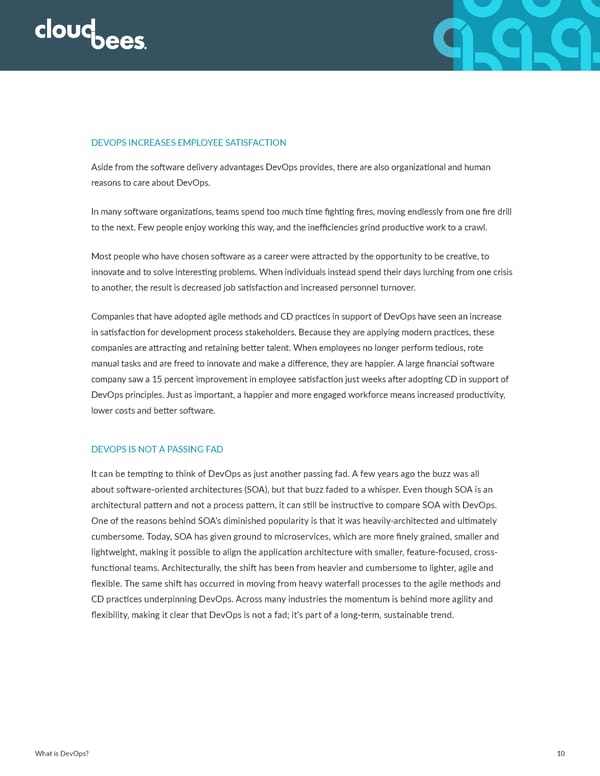DEVOPS INCREASES EMPLOYEE SATISFACTION Aside from the software delivery advantages DevOps provides, there are also organizational and human reasons to care about DevOps. In many software organizations, teams spend too much time fighting fires, moving endlessly from one fire drill to the next. Few people enjoy working this way, and the inefficiencies grind productive work to a crawl. Most people who have chosen software as a career were attracted by the opportunity to be creative, to innovate and to solve interesting problems. When individuals instead spend their days lurching from one crisis to another, the result is decreased job satisfaction and increased personnel turnover. Companies that have adopted agile methods and CD practices in support of DevOps have seen an increase in satisfaction for development process stakeholders. Because they are applying modern practices, these companies are attracting and retaining better talent. When employees no longer perform tedious, rote manual tasks and are freed to innovate and make a difference, they are happier. A large financial software company saw a 15 percent improvement in employee satisfaction just weeks after adopting CD in support of DevOps principles. Just as important, a happier and more engaged workforce means increased productivity, lower costs and better software. DEVOPS IS NOT A PASSING FAD It can be tempting to think of DevOps as just another passing fad. A few years ago the buzz was all about software-oriented architectures (SOA), but that buzz faded to a whisper. Even though SOA is an architectural pattern and not a process pattern, it can still be instructive to compare SOA with DevOps. One of the reasons behind SOA’s diminished popularity is that it was heavily-architected and ultimately cumbersome. Today, SOA has given ground to microservices, which are more finely grained, smaller and lightweight, making it possible to align the application architecture with smaller, feature-focused, cross- functional teams. Architecturally, the shift has been from heavier and cumbersome to lighter, agile and flexible. The same shift has occurred in moving from heavy waterfall processes to the agile methods and CD practices underpinning DevOps. Across many industries the momentum is behind more agility and flexibility, making it clear that DevOps is not a fad; it’s part of a long-term, sustainable trend. What is DevOps? 10
 What is DevOps ? Page 10 Page 12
What is DevOps ? Page 10 Page 12